 _
_Lámina 22: Teocalis en Chichén Itzá; El Castillo
_
__"Asomándose por un claro en plena selva de Yucatán, un monumental edificio Maya parece tocar el cielo, en la representación de Catherwood de la Pirámide de Kulkulcán. Aunque algunas partes de la estructura aparecen cubiertas por la densa vegetación, Catherwood quiso revelar el detalle más intrigante de la pirámide, dibujando en primer plano una de las muchas y elaboradas cabezas de serpiente.
__Esta pirámide Maya es una estructura de casi 80 pies de alto, de cuatro lados, con escaleras en cada uno. Hoy en día se pueden apreciar dos esculturas de cabezas de serpiente en la parte baja de cada escalera. Durante los equinoccios, en septiembre y marzo, el sol produce una sombra que se desliza por las 91 gradas de la escalera del norte, semejante a la figura de una serpiente desenrollándose. En la actualidad este sitio arqueológico sigue atrayendo a muchísimos turistas que fascinados admiran este magnífico tributo a Kulkulcán.
__Los mayas veneran una serpiente emplumada, el dios Kulkulcán o Quetzalcóatl. Cuenta la leyenda que un antiguo gobernador, Kulkulcán, fundó la ciudad Maya de Chichén Itzá, aunque hay varias versiones de esta historia. Una de ellas cuenta que el fundador errante fue consumido por fuego divino, y que su corazón se convirtió en el planeta Venus y sus cenizas en pájaros. En honor a esta deidad, los mayas edificaron las escaleras en forma de serpiente con asombrosa precisión. Catherwood logró identificar acertadamente el contexto religioso de la pirámide, por lo que la cabeza de serpiente de piedra aparece en primer plano."
__Esta pirámide Maya es una estructura de casi 80 pies de alto, de cuatro lados, con escaleras en cada uno. Hoy en día se pueden apreciar dos esculturas de cabezas de serpiente en la parte baja de cada escalera. Durante los equinoccios, en septiembre y marzo, el sol produce una sombra que se desliza por las 91 gradas de la escalera del norte, semejante a la figura de una serpiente desenrollándose. En la actualidad este sitio arqueológico sigue atrayendo a muchísimos turistas que fascinados admiran este magnífico tributo a Kulkulcán.
__Los mayas veneran una serpiente emplumada, el dios Kulkulcán o Quetzalcóatl. Cuenta la leyenda que un antiguo gobernador, Kulkulcán, fundó la ciudad Maya de Chichén Itzá, aunque hay varias versiones de esta historia. Una de ellas cuenta que el fundador errante fue consumido por fuego divino, y que su corazón se convirtió en el planeta Venus y sus cenizas en pájaros. En honor a esta deidad, los mayas edificaron las escaleras en forma de serpiente con asombrosa precisión. Catherwood logró identificar acertadamente el contexto religioso de la pirámide, por lo que la cabeza de serpiente de piedra aparece en primer plano."
_
*__*__*__*__*__*__*
_
Plate 22: Teocallis, at Chichén-Itzá (on stone, by A. Picken)
_
__"Rising through a clearing in the jungle of the Yucatán, a monumental Maya pyramid appears to touch the sky in Catherwood’s illustration of the Pyramid of Kulkulcán. Although parts of the structure are covered in dense foliage, Catherwood has unveiled the pyramid’s most intriguing detail by bringing one of its many elaborate stone snakeheads to the foreground.
__This Maya pyramid is a nearly 80-foot, four-sided structure with a staircase on each side. Today it is known that it has two snakehead sculptures at the bottom of each staircase. On the equinoxes in September and March the sun casts a shadow that cascades down the 91 steps of the northern staircase, resembling the shape of an uncoiling serpent. Today, the ancient site still draws many fascinated tourists who admire this skillful tribute to Kulkulcán.
__The Maya worshipped a feathered serpent god Kulkulcán, or Quetzalcóatl. Legend claims that an ancient ruler, Kulkulcán, founded the Maya city of Chichén Itzá. There are several versions of this story. In one, it was said that the wandering founder was devoured by divine fire. His heart turned into the planet Venus and his ashes became birds. To honor this deity, the Maya built the serpent staircases with astounding precision. Catherwood accurately identified the pyramid’s religious framework by dramatically bringing the stone snakehead to the illustration’s foreground".
__This Maya pyramid is a nearly 80-foot, four-sided structure with a staircase on each side. Today it is known that it has two snakehead sculptures at the bottom of each staircase. On the equinoxes in September and March the sun casts a shadow that cascades down the 91 steps of the northern staircase, resembling the shape of an uncoiling serpent. Today, the ancient site still draws many fascinated tourists who admire this skillful tribute to Kulkulcán.
__The Maya worshipped a feathered serpent god Kulkulcán, or Quetzalcóatl. Legend claims that an ancient ruler, Kulkulcán, founded the Maya city of Chichén Itzá. There are several versions of this story. In one, it was said that the wandering founder was devoured by divine fire. His heart turned into the planet Venus and his ashes became birds. To honor this deity, the Maya built the serpent staircases with astounding precision. Catherwood accurately identified the pyramid’s religious framework by dramatically bringing the stone snakehead to the illustration’s foreground".
_
Danielle Grogan and Shu Liu (Exhibition online Drawing from the Past)
Danielle Grogan and Shu Liu (Exhibition online Drawing from the Past)




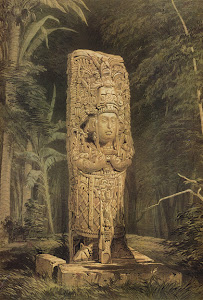
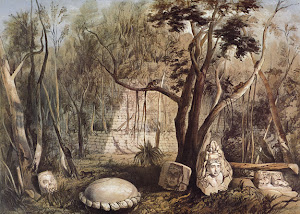
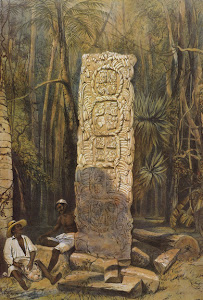
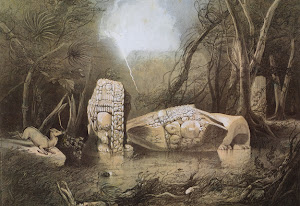
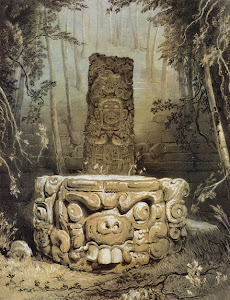

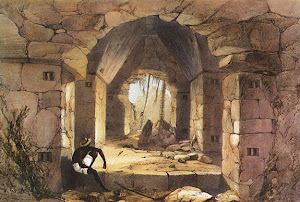


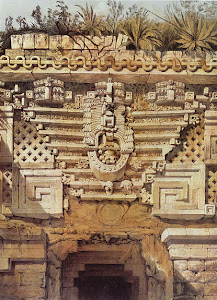
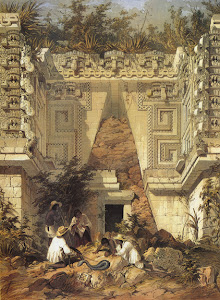
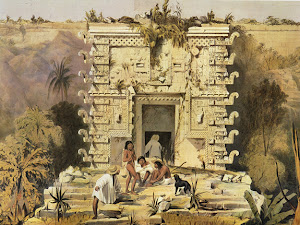
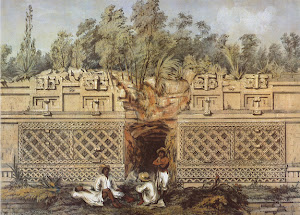
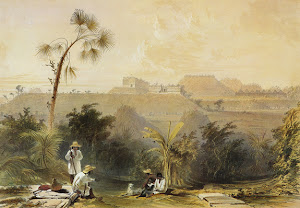
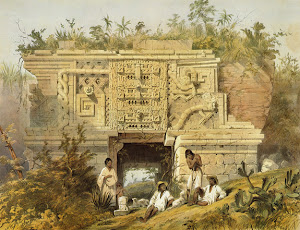
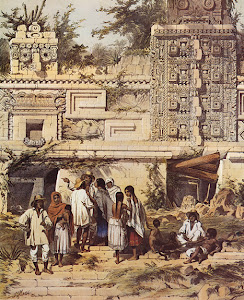
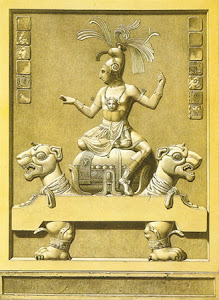

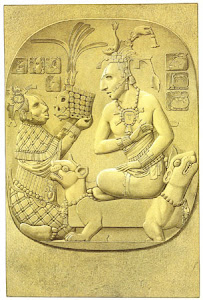
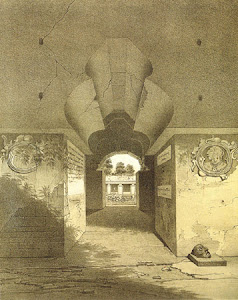
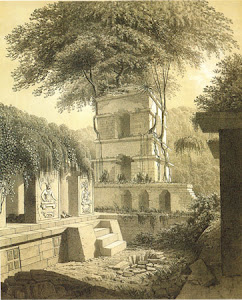
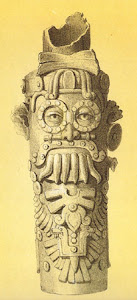


No hay comentarios:
Publicar un comentario